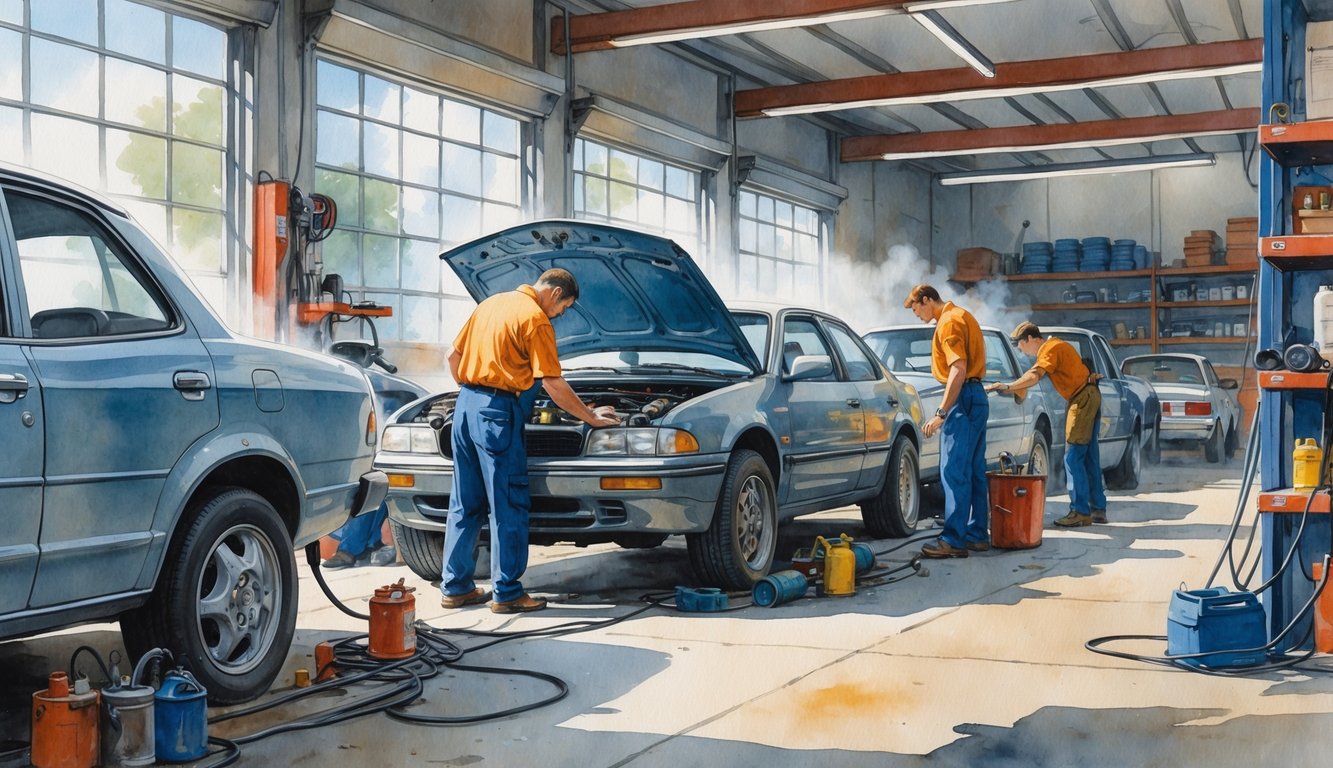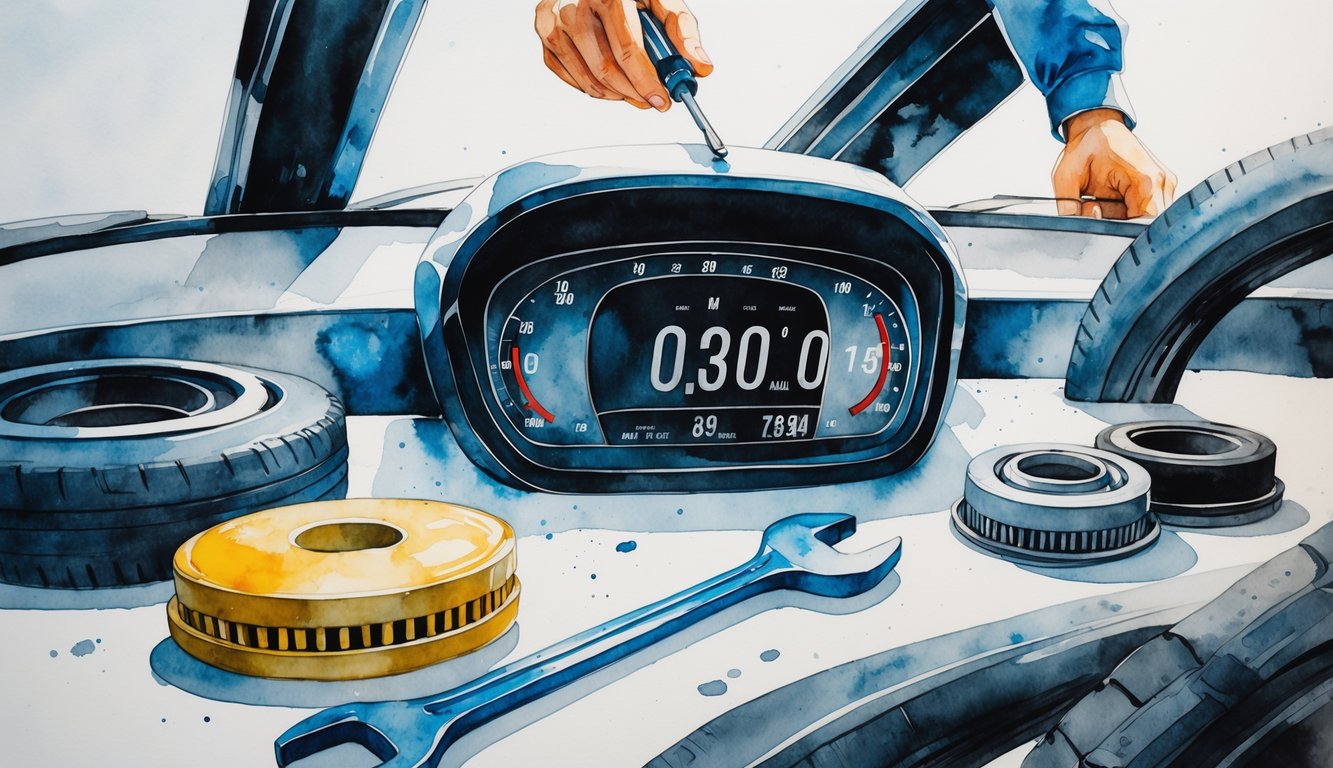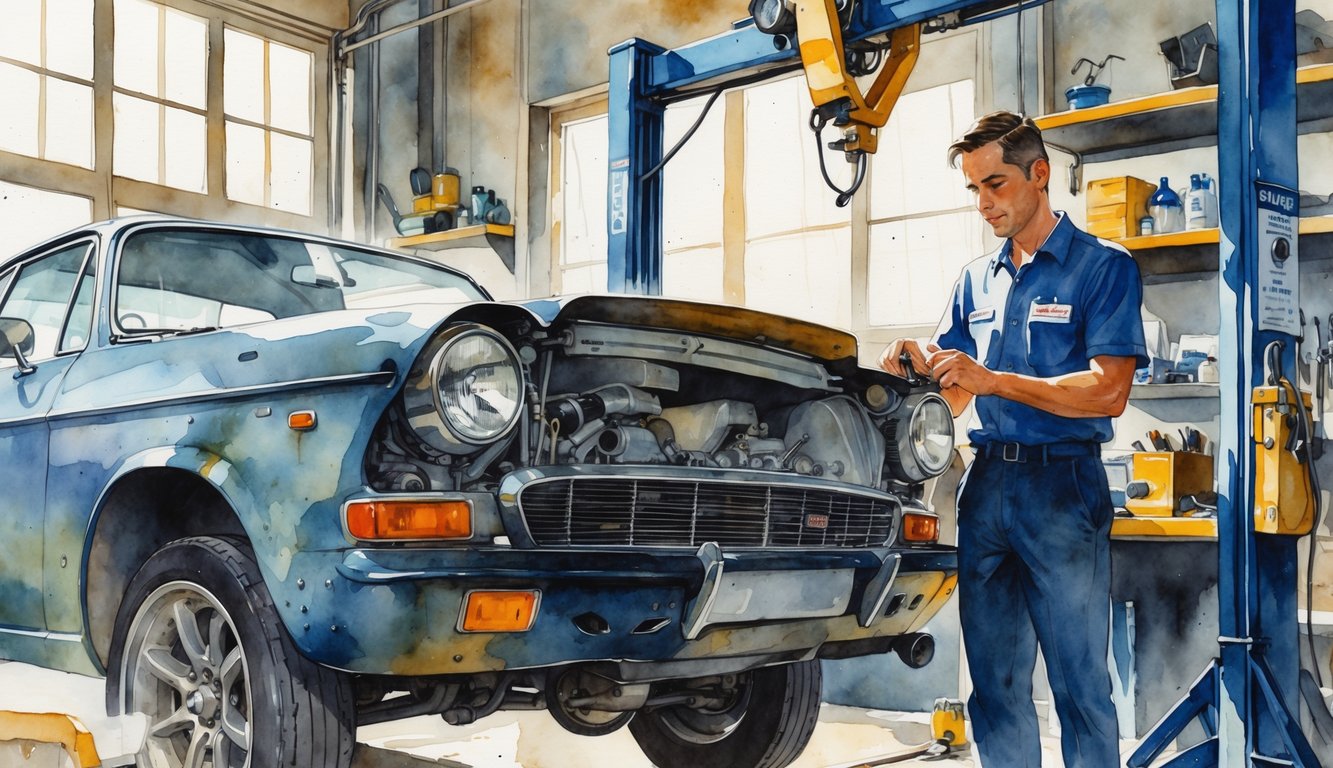
Okay, so, high-mileage cars—why do they always pick the worst moments to fall apart? I’m convinced my car waits until I’m late before it lights up the dash like a Christmas tree. I changed the oil, what, eight weeks ago? Suddenly the thing thinks it’s dying. Mechanics keep telling me there are all these sneaky maintenance gaps with high-mileage cars—stuff not on any checklist, apparently—and, get this, some survey said UK drivers lose over £600 a year to surprise repairs. That’s just… a lot. I asked my mechanic if I’m just losing it, and he mumbled something about coolant hoses splitting where I can’t see. Cool, thanks for the nightmares.
You’d think high miles would just mean obvious stuff—bald tyres, squeaky brakes, whatever. Nope. It’s always something weirder: random sensors, electrical gremlins, transmission fluid that looks like barbecue sauce, and suspension bushings that crumble if you look at them funny. I read somewhere that younger drivers love DIY repairs, but honestly? I tackle one thing, then a garage finds a whole new mess I didn’t even know existed. There goes another weekend.
Why does nobody tell you that old, high-mileage cars don’t bother with warning signs? They just go from “fine” to “catastrophe” overnight. I keep thinking I should make a spreadsheet for weird noises, but that sounds exhausting. Mechanics? They barely blink. They say to check literally everything more often past 100,000 miles, but what about the stuff not on the sticker? Now my clock spring’s clicking, and I can’t even remember if it always did that.
What Defines High Mileage in Modern Vehicles?

Mileage. Just a number until my mechanic sighs and starts ranting about timing belts. Two cars, same mileage, totally different stories—one gets pampered, the other lives off drive-thru fries and never sees an alignment rack.
Mileage Benchmarks: 100,000 Miles and Beyond
Is 100,000 miles the magic number? Some people say yes, others push it to 150,000, but the guy lowballing my trade-in never hesitates. Kelley Blue Book, Honda, whoever—they all say 100,000 is when the banks get nervous and warranties disappear.
I’ve seen cars with direct injection and turbos cruise past 200,000 if you don’t treat them like junk—regular fluid changes, skip the rock salt. My buddy Stan’s Camry hit 300,000, and he still ignores brake pad squeals. Mechanics say it’s not just about miles; it’s age, how you drive, where you live. Chicago winters? Your car’s doomed. Mileage is just… context, I guess.
High-Mileage Vehicles vs. Older Models
Technology’s supposed to help, right? Sometimes it’s just more stuff to break. A 2010s Accord has electronic throttle, corrosion-resistant frames, and my old Civic’s rocker panels look like Swiss cheese in comparison.
But then, a 10-year-old Mercedes with 120k and a clean service record is a totally different beast than my neighbor’s Oldsmobile with half the miles and green sludge in the coolant. High-mileage cars now can outlast the old ones—if you don’t skip timing chain service (looking at you, BMW N20 folks). For me, it’s all about what’s been skipped or ignored, not the odometer rolling over.
Understanding Maintenance History
Nobody ever hands over a binder with every oil change. Wouldn’t that be nice? High-mileage cars survive on paper trails—a missed transmission fluid change at 90k can kill an automatic, and skipping valve checks is basically a death sentence for Subarus. Carfax might show regular dealer service, but what about the stuff you did in the driveway?
Mechanics say it’s the missed intervals, not the miles, that destroy cars. “That sticker on your windshield isn’t just for looks,” my guy Steve says. If I’m looking for a used car, I check engine hours if possible—taxis and fleet cars rack up miles differently. Look for timing belt changes, fluid intervals, closed recalls. Otherwise, mileage is just a number floating on top of a pile of unknowns.
Critical Routine Maintenance Often Overlooked

After twenty years of driving, you’d think I’d have this figured out. Nope. I meet people who swear they do everything right, and then a tiny gasket fails and their engine’s toast. Or their brakes go soft because the master cylinder ran dry.
Skipping Oil Changes and Their Impact
People love to stretch oil changes “just this once.” Then their Honda starts burning oil, or the Audi’s timing chain rattles. Oil breaks down, sludge builds up, and the synthetic vs conventional debate doesn’t matter when you’re 4,000 miles late. My old shop had a Camry come in after 17 months on the same oil—completely seized. $4,800 later, lesson learned.
Consumer Reports did an engine teardown after 15,000 miles and the varnish was disgusting. Factory intervals exist for a reason. I get it, life’s busy, but those “just a few hundred miles late” folks are always back for bigger problems. Even the “change oil” light? It’s just counting miles, not checking if the oil’s still good.
High-mileage cars get hit harder if you skip oil changes, especially if they’re idled a lot or used for rideshare. Expect rattling chains, VVT issues, blue smoke. GM manuals say follow severe service intervals—pretty much everyone drives “severe” now.
Neglecting Brake Fluid Replacement
Nobody brags about clean brake fluid. “Flush it? Wait, that’s a thing?” But any tech who’s bled out brown, metallic sludge knows why ABS modules die. Factory says every 2–3 years; I see cars at 9+ years and the pedal’s a marshmallow.
Humidity sneaks in—even sealed systems aren’t safe. Boiling point drops, DOT4 turns black, rubber seals swell. I carry a test strip for customers—shows 3% water, suddenly they care. BMWs especially—skip the flush, kill the ABS pump. It’s $90–120 for a flush. Not exactly breaking the bank.
Racing schools flush fluid before every event. Regular drivers? “Next time, maybe.”
Ignoring Spark Plug Intervals
Iridium plugs last forever, right? Yeah, no. NGK and Denso claim 100,000 miles, but I’m tossing burnt plugs at 68,000, especially with cheap gas. People ignore misfires until the check engine light blinks and the car stutters.
My friend’s Outback lost 6 mpg because “the plugs looked fine.” The gap doubled, though. DIYers snap plugs off in aluminum heads and then freak out at the repair bill. Chrysler 3.6 Pentastar? Skip plugs, get carbon buildup, guaranteed.
Don’t check them every week, but ignore intervals (30–50k for copper, 80–100k for iridium/platinum) and you’ll get hard starts, dirty cats, dead coils. Sometimes a $9 plug saves a $580 coil pack. I wish that was an exaggeration.
Forgetting Shock and Strut Inspections
Most people are shocked (ha) to find their struts are original at 140,000 miles. I can spot the bounce or hear the clunk from a block away. It’s not “nice to have”—if your tires start cupping, your brakes take longer to stop, it’s time. Tire Rack’s tests show a 23% increase in stopping distance with worn shocks. That’s not nothing.
“If it’s not leaking, it’s fine.” Nope. Most shocks lose half their dampening before you see a drop. At the shop, I’ll measure rebound and compression if someone argues. If your car floats or nose-dives, replace them. Worn shocks kill tires, ball joints, control arms—stuff you don’t want to budget for.
KYB and Monroe say check every 12,000 miles. Nobody does. Two-minute push test and a flashlight could save you hundreds, but everyone waits until they fail inspection in a snowstorm.
